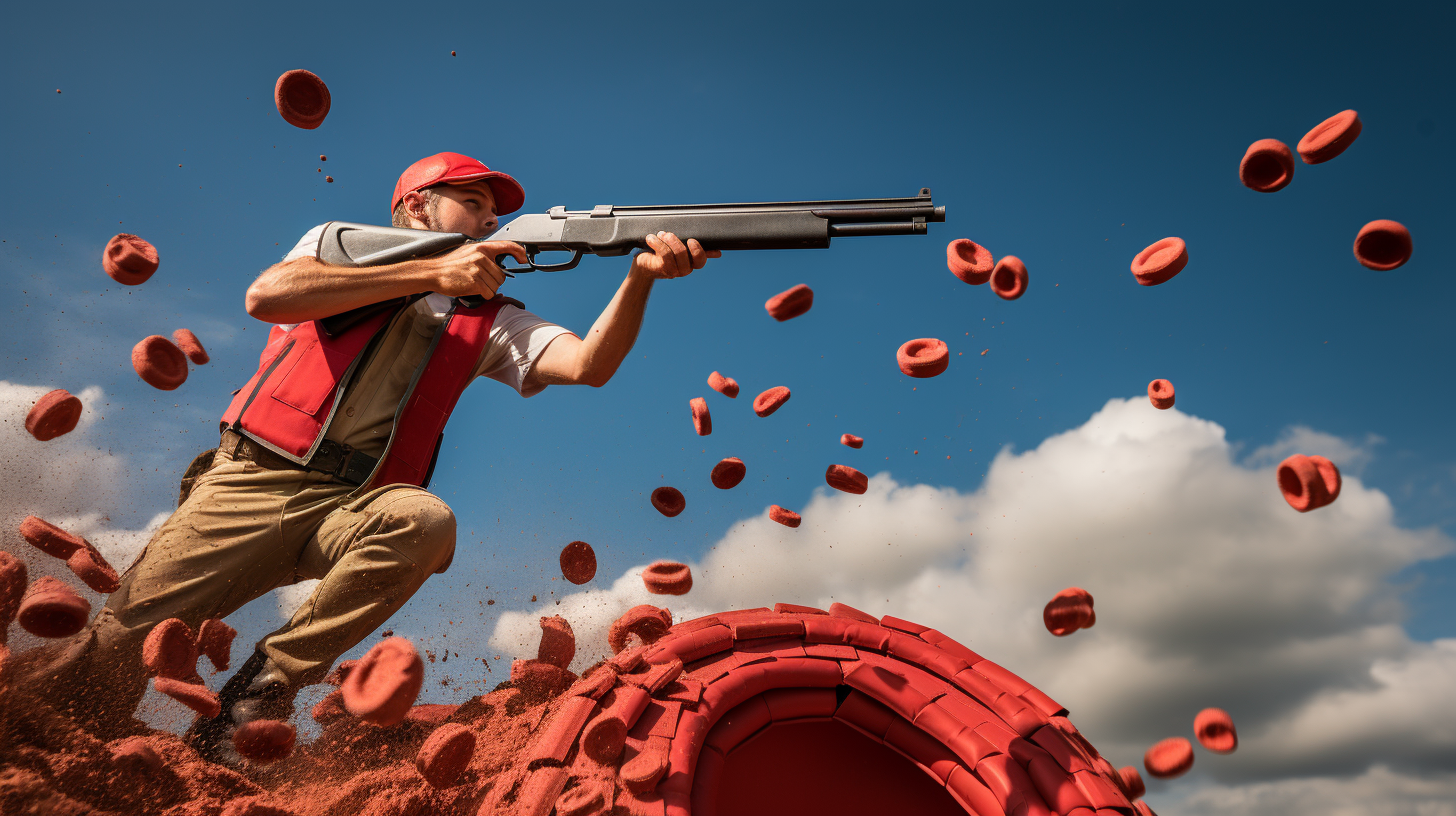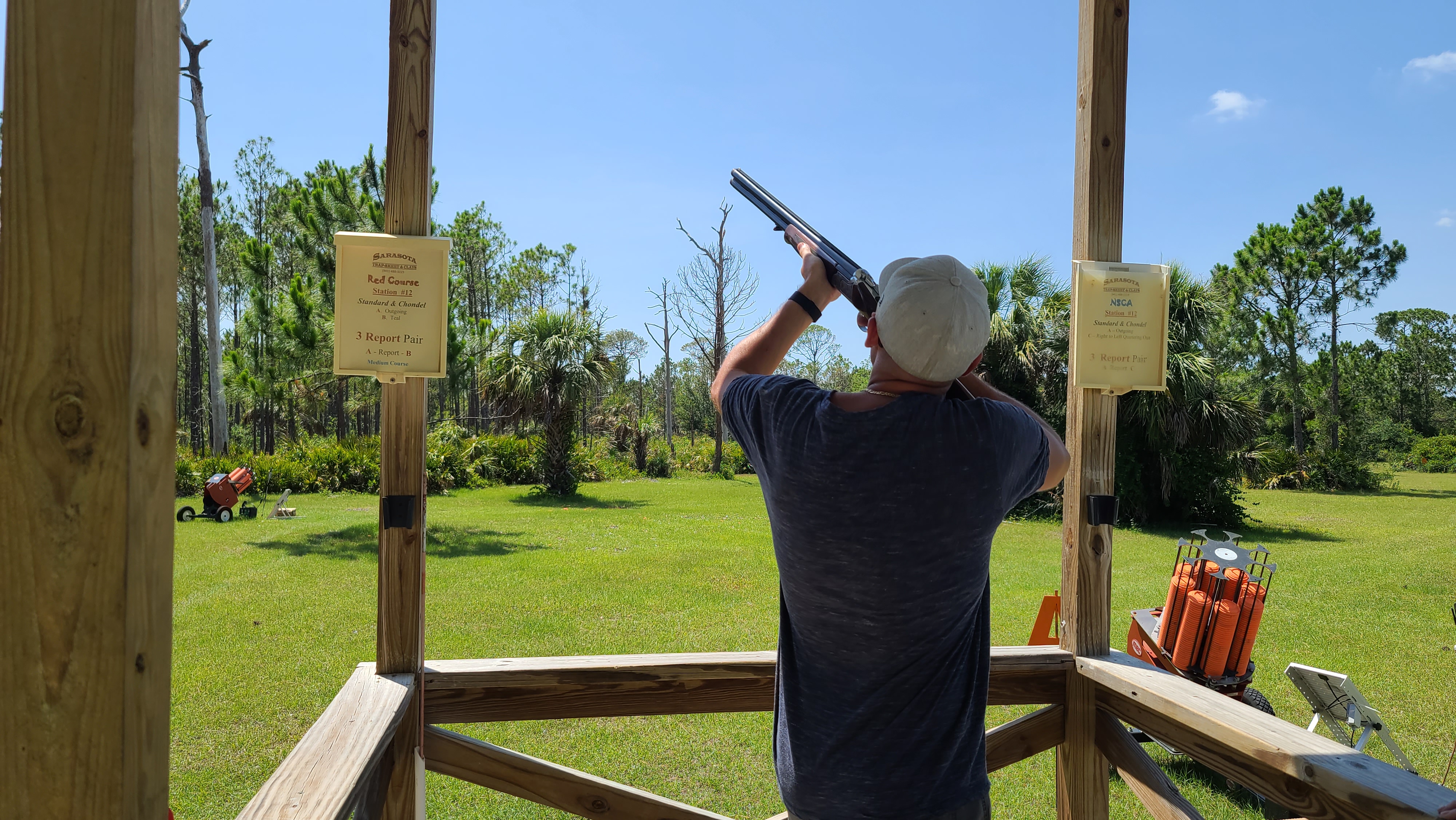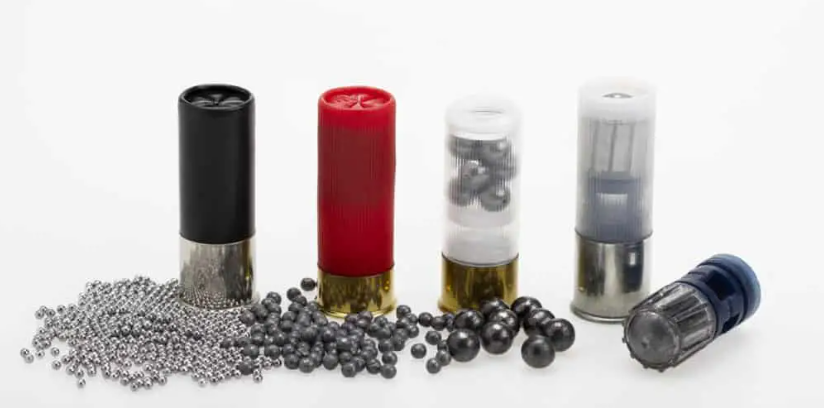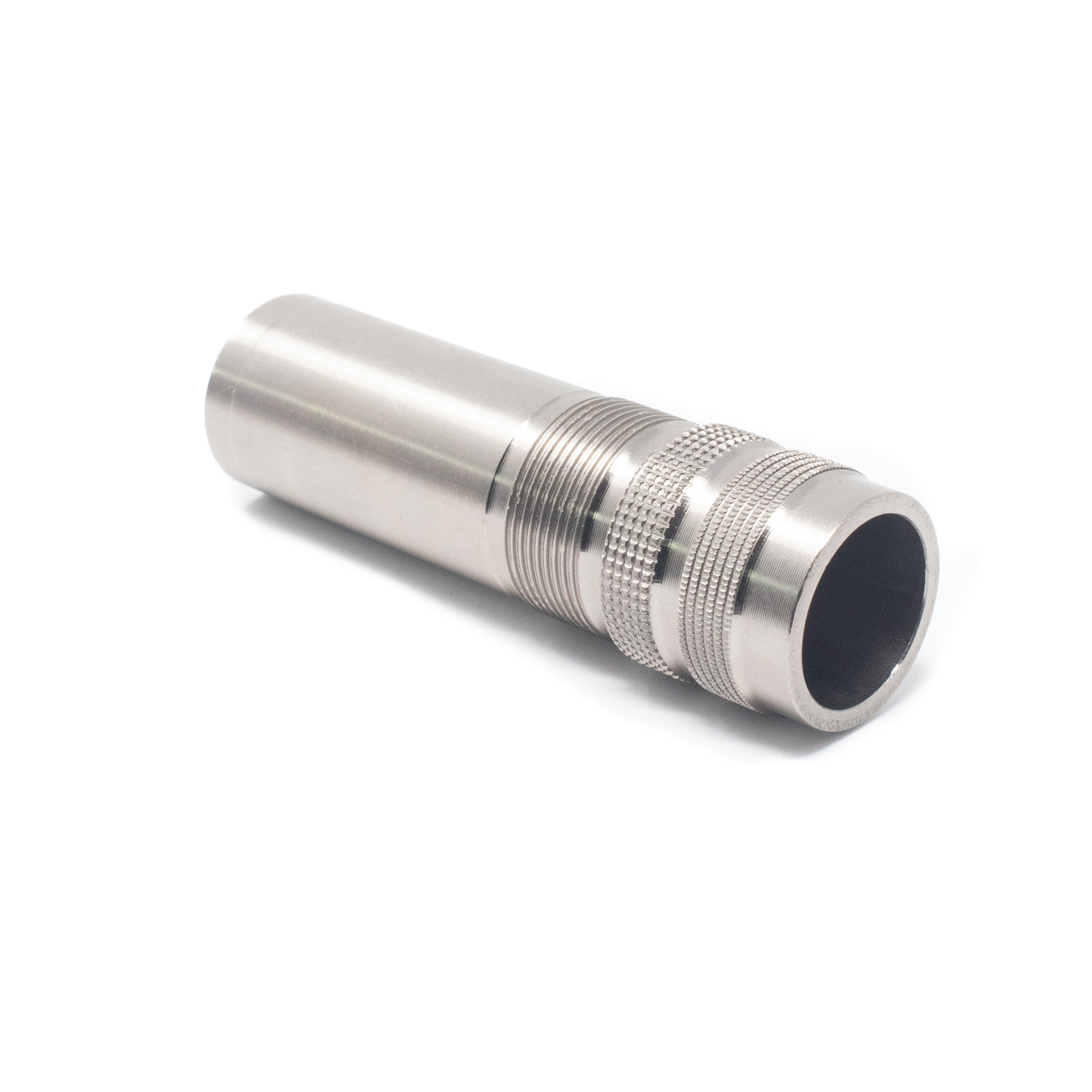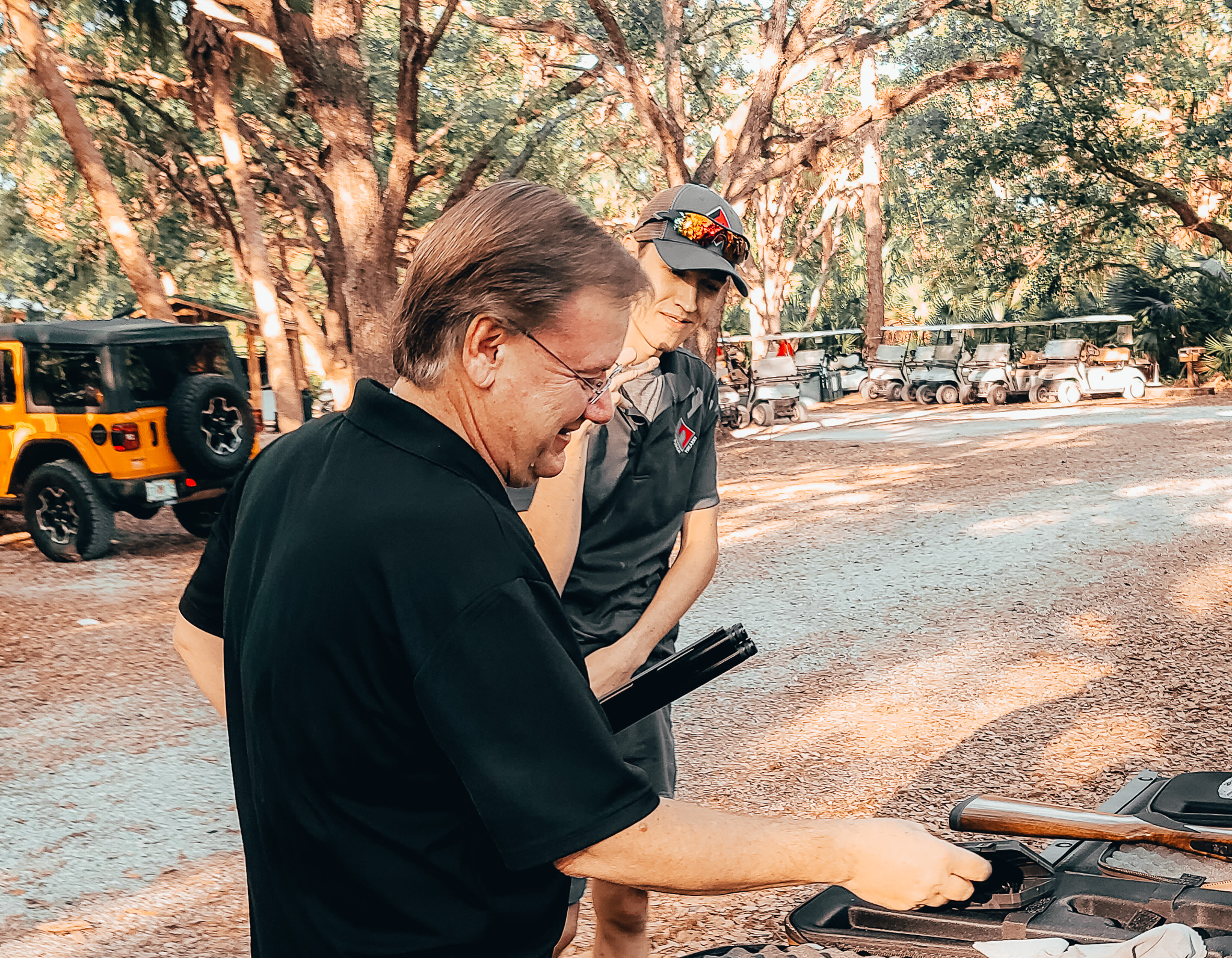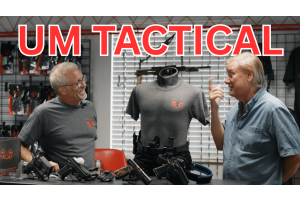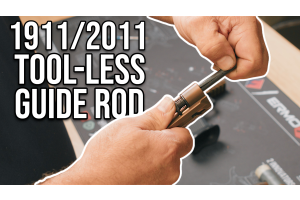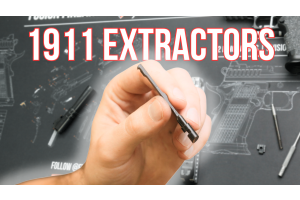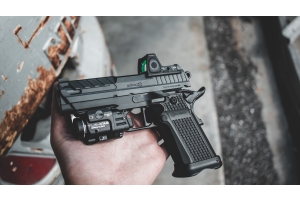Everything You Need to Know About Chokes on a Shotgun
0%

Shotgun chokes can significantly impact your shooting performance, whether you’re a seasoned hunter or a competitive shooter. By understanding the role of chokes on a shotgun, their constriction levels, and the different types available, you can optimize your shotgun’s performance and adapt to various shooting situations. Ready to improve your shooting technique and precision? Let’s dive into the world of chokes on a shotgun.
Short Summary
-
Understanding shotgun chokes and their role in modern shotguns
-
Different types of choke constrictions for various shooting needs, including fixed and interchangeable chokes
-
Tips on choosing the right choke, proper maintenance, and improving your shooting technique
Understanding Shotgun Chokes
Shotgun chokes are an essential component of any shotgun, designed to regulate shot dispersion and range, thereby enhancing shotgun performance when using lead shot or other types of shot materials. Choke restrictions vary, allowing shooters to customize their shotguns for specific shooting goals.
By selecting the right choke for the job, shooters can improve their accuracy and range, making them more efficient.
The Role of Chokes
Chokes play a significant role in shaping the shot distribution for specific ranges and targets, improving shotgun performance. The concept of choke boring was introduced by Jeremiah Smith, and the first practical choke was invented by William Wellington Greener. Early choked shotguns produced by American gunsmiths faced issues like lead fouling and inconsistent patterning. However, chokes have since evolved to become an integral part of modern shotguns.
The use of chokes allows shooters to fine-tune their shotguns for various shooting situations. For example, a tighter choke may be ideal for turkey hunting, while a more open choke might be better suited for skeet shooting. Ultimately, testing different chokes and shells is essential for developing confidence in your shotgun and achieving optimal performance.
Choke Constrictions
Choke constrictions refer to the difference in diameter between the barrel’s bore and the choke’s exit end. The restriction affects the shot pattern and range, with tighter restrictions resulting in longer ranges and denser shot patterns. Choke restrictions are available in various sizes, accommodating different shooting needs and preferences.
There are two types of chokes: fixed chokes and interchangeable chokes. Fixed chokes are integrated into the shotgun barrel and cannot be altered, while interchangeable chokes can be swapped out to adjust the compression size. Interchangeable chokes allow shooters to experiment with different restrictions and find the best combination for their specific shooting needs.
Types of Shotgun Chokes
There are two primary types of shotgun chokes: fixed chokes and interchangeable chokes. Fixed chokes are built into the shotgun barrel and cannot be changed, while interchangeable chokes can be easily swapped out for greater versatility and customization based on shooting needs.
Let’s take a closer look at these two types of chokes.
Fixed Chokes
Fixed chokes are choke tubes that remain permanently attached to the shotgun barrel and are not adjustable. They are the standard for many shotgun barrels and are commonly found on older models. The primary benefit of fixed chokes is their dependability and longevity compared to interchangeable chokes. However, the lack of adjustability for different shooting circumstances can be a drawback for some shooters.
Retrofitting fixed-choked guns with interchangeable shotgun choke tubes can provide greater versatility and adaptability for various shooting scenarios. This can be particularly beneficial for shooters who frequently switch between hunting, trap, and skeet shooting or those who want to experiment with different choke restrictions.
Interchangeable Chokes
Interchangeable chokes, also known as screw in chokes, are metal inserts that can be attached to the end of a shotgun barrel. They are secured in place either by screwing onto the end, or with an external ringnut. First introduced with the WinChoke system, they have become widely adopted among shotgun manufacturers. These chokes provide greater versatility and allow shooters to quickly change their shotgun’s constriction based on their shooting needs.
Many companies manufacture interchangeable choke tubes, including Briley, Carlsons, and Trulock. Some gunsmiths have even developed custom-designed replacement choke tubes, such as the Quick Choke by Italian gunsmith BREDA. Interchangeable chokes give shooters the flexibility to experiment and find the best restriction for their specific shooting requirements.
Popular Choke Configurations
Improved Cylinder, Modified, and Full chokes are common configurations that cater to various shooting situations. Each configuration offers different degrees of restriction, affecting the shot pattern and range.
Let’s explore these popular choke configurations in more detail.
Improved Cylinder Choke
An Improved Cylinder choke is ideal for close-range targets, providing a wider shot pattern compared to Modified and Full chokes. This choke has a slight constriction, allowing for a more open shot pattern that is effective for distances between 20 and 35 yards.
The Improved Cylinder choke is particularly useful for hunting small game at close range or shooting sporting clays, where a wide shot pattern is necessary for quickly moving targets. Its versatility makes it a popular choice for shooters who need a reliable choke for various shooting activities.
Modified Choke
The Modified choke is a versatile and popular choke configuration that is suitable for medium-range shooting, offering a balanced shot pattern. This choke provides a tighter pattern than the Improved Cylinder choke but is more open than the Full choke, making it an optimal choice for various hunting applications and competition specialties.
The effective range of a Modified choke is typically between 32 to 40 meters, providing a shot pattern density of 55% to 65% of the pellets in the load within a 76 cm pattern plate at a range of 36 meters. Its adaptability makes it a go-to choice for many shooters who need a choke that performs well in different shooting scenarios.
Full Choke
The Full choke, a type of shotgun choke, is the tightest restriction among the common choke configurations, making it ideal for long-range shooting. It produces a tight and centralized shot pattern, which is effective for distances of 40 yards and beyond.
A Full choke is typically used for hunting squirrels, turkey, and other game at extended distances, where a tight pattern and long-range performance are necessary. Its ability to maintain a dense pattern at longer ranges makes it a popular choice for shooters who need precision and power for their shooting activities.
Specialty Choke Tubes
Specialty choke tubes are designed for specific types of shot and shooting situations, such as waterfowl hunting or trap shooting. These chokes are engineered to work with a variety of shot materials, including steel, tungsten, and Hevi-Shot, offering optimal performance for each situation.
Some examples of specialty choke tubes include oval chokes, offset chokes, and shot spreaders or diffusion chokes. By using specialty choke tubes tailored to your shooting requirements, you can enhance your shotgun’s versatility and improve its performance in various shooting situations.
Ammunition Compatibility
Chokes can be designed for use with various shot materials, including lead, steel, bismuth, and tungsten. When using chokes with different shot materials, it’s important to ensure compatibility to avoid potential safety hazards and achieve optimal performance.
Bismuth shotshells and other lead-free alternatives are available to comply with restrictions for hunting waterfowl. They are also safe to use with older chokes not intended for steel shot. To determine whether a choke tube is restricted to steel or lead only, consult the manufacturer or review your owner’s manual.
Patterning Your Shotgun
Testing different choke and ammunition combinations is crucial to determine the best setup for your shooting needs. Patterning your shotgun involves firing from a rest into a 30-inch circle target at 40 yards, providing a suitable center mark for evaluating performance.
If the pattern test yields unsatisfactory performance, consider experimenting with different loads or investing in a new choke tube and adjusting the choke one size before retesting the pattern. By patterning your shotgun, you can identify the most effective range and choke/load combination for your specific shooting requirements.
Choosing the Right Choke for Your Needs
When selecting the right choke for your needs, consider factors such as shooting range, target type, and personal preferences. Different choke restrictions and types can greatly impact the performance of your shotgun, so it’s essential to choose the right one for your specific shooting situation.
Experimenting with different chokes and ammunition, as well as consulting with a knowledgeable gunsmith or expert, can help you find the best choke for your shooting needs. Ultimately, the right choke will enhance your shooting performance and help you achieve your desired results.
Proper Choke Maintenance
Regular cleaning and inspection of your chokes are essential for optimal performance and preventing potential safety hazards. Chokes can become dirty or damaged over time, so it’s crucial to maintain them properly to ensure their longevity and effectiveness.
Inspect chokes for geometric perfection, signs of deformation, or dents, and clean them after each use. Use the appropriate wrench to fit and remove choke tubes, and apply suitable lubricants, such as Teflon, copper, or molybdenum disulfide grease.
If your chokes are dirty or rusty and won’t come off, take your gun to a qualified gunsmith to remove them correctly.
Tips for Improving Your Shooting Technique
Practice and experimentation with different chokes, ammunition, and shooting techniques can lead to improved overall performance. By trying various combinations of chokes and ammunition, you can determine what works best for your shooting needs and preferences. Document your progress and analyze the results to identify areas for improvement and fine-tune your shooting technique.
Frequent practice, exploration of different chokes and ammunition, and recording your progress can help you become a more confident and skilled shooter.
Summary
Understanding the role of shotgun chokes, their types, and choke configurations is crucial for optimizing your shotgun’s performance in various shooting situations. By experimenting with different chokes and ammunition, maintaining your chokes properly, and practicing your shooting technique, you can enhance your shooting experience and achieve better results in your hunting or competitive shooting endeavors. So, go ahead and explore the world of shotgun chokes to find the perfect combination for your shooting needs.
Frequently Asked Questions
What's the difference in chokes for shotguns?
Choke tubes help to control the spread of a shotgun’s shot, impacting how far it will travel. A cylinder choke produces a 40-inch spread at 25 yards, while improved cylinder, modified and full chokes will do the same at 30, 35 and 40 yards respectively.
What does 4 notches on a choke mean?
Four notches on a choke refers to an Improved Cylinder choke, which is recommended for steel shot.
What are the main types of shotgun chokes?
The main types of shotgun chokes are fixed chokes and interchangeable chokes, which allow the user to customize their shooting accuracy.
Interchangeable chokes are especially useful for hunters who need to adjust their shooting accuracy for different types of game. They can also be used to adjust the spread of the shot for different distances.
How can I choose the right choke for my shooting needs?
Choose a choke based on your shooting needs such as range, target type and personal preferences.
Experiment with various chokes and ammunition to determine the best combination for you.
How should I maintain my shotgun chokes?
Make sure to regularly clean and inspect your chokes, use the appropriate wrench and lubricants, and consult a qualified gunsmith if you encounter any issues for optimum shotgun choke maintenance.
Regular maintenance is essential for keeping your shotgun chokes in top condition. Cleaning and inspecting your chokes regularly, using the right tools and lubricants, and consulting a qualified gunsmith if you have any issues will help ensure your shotgun chokes are in the best condition.


